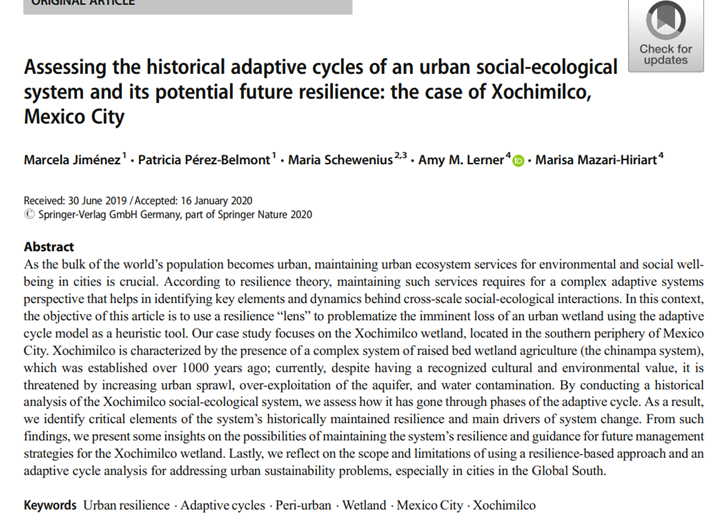Assessing the historical adaptive cycles of an urban social-ecological system and its potential future resilience: the case of Xochimilco, Mexico City
29 junio 2021
29 de junio de 2021
Fuente: Spinger
Autores: Marcela Jiménez, Patricia Pérez-Belmont, Maria Schewenius, Amy M. Lerner & Marisa Mazari-Hiriart
Fecha de publicación del artículo: 04 de febrero de 2020
As the bulk of the world’s population becomes urban, maintaining urban ecosystem services for environmental and social well-being in cities is crucial. According to resilience theory, maintaining such services requires for a complex adaptive systems perspective that helps in identifying key elements and dynamics behind cross-scale social-ecological interactions. In this context, the objective of this article is to use a resilience “lens” to problematize the imminent loss of an urban wetland using the adaptive cycle model as a heuristic tool. Our case study focuses on the Xochimilco wetland, located in the southern periphery of Mexico City. Xochimilco is characterized by the presence of a complex system of raised bed wetland agriculture (the chinampa system), which was established over 1000 years ago; currently, despite having a recognized cultural and environmental value, it is threatened by increasing urban sprawl, over-exploitation of the aquifer, and water contamination. By conducting a historical analysis of the Xochimilco social-ecological system, we assess how it has gone through phases of the adaptive cycle. As a result, we identify critical elements of the system’s historically maintained resilience and main drivers of system change. From such findings, we present some insights on the possibilities of maintaining the system’s resilience and guidance for future management strategies for the Xochimilco wetland. Lastly, we reflect on the scope and limitations of using a resilience-based approach and an adaptive cycle analysis for addressing urban sustainability problems, especially in cities in the Global South.
Más recursos digitales en:


